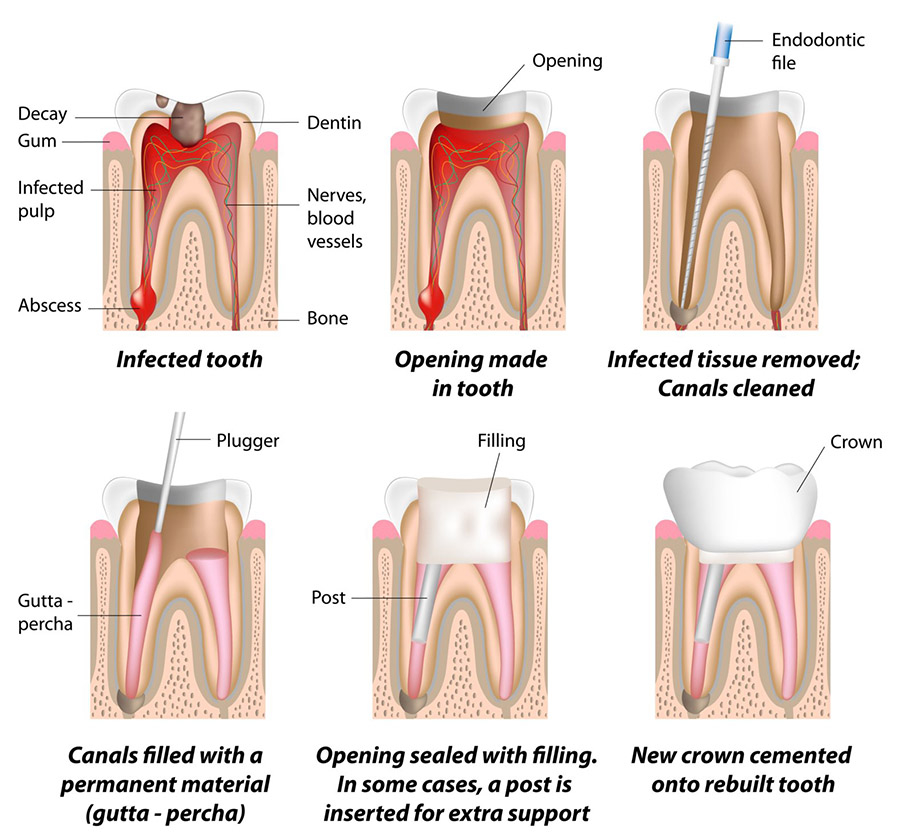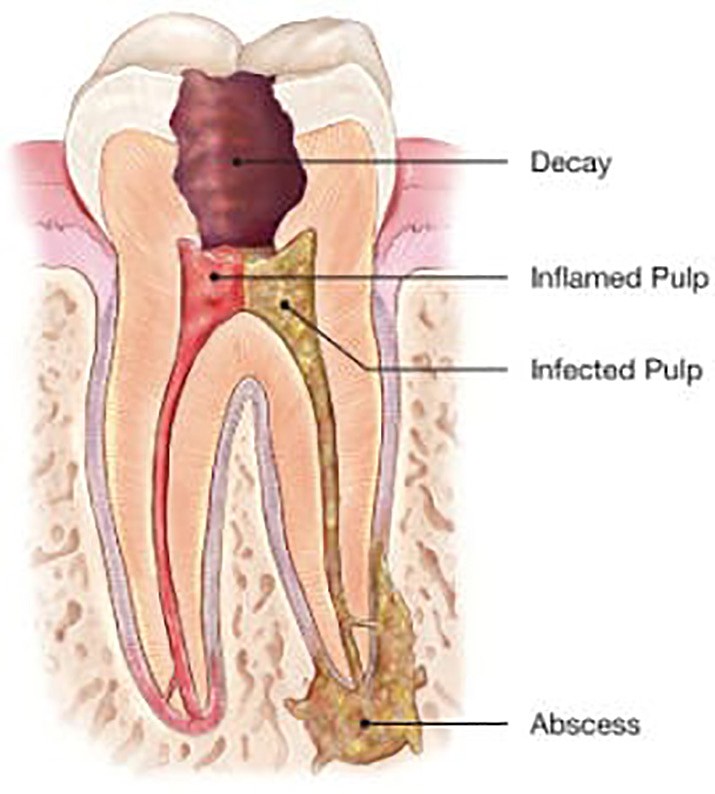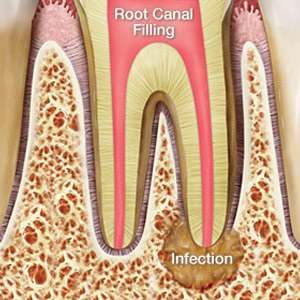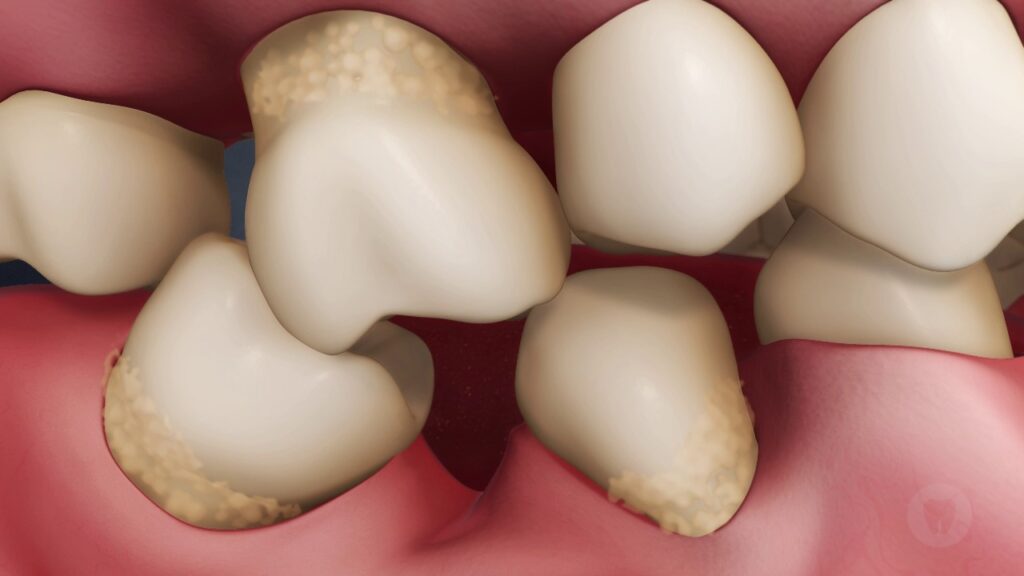root canal treatment
What is a Root Canal Treatment
A root canal treatment, also known as endodontic therapy, is a dental procedure that is performed to treat a severely damaged or infected tooth. The procedure involves removing the damaged or infected pulp, which is the soft tissue inside the tooth that contains nerves and blood vessels, and then cleaning, disinfecting and shaping the root canals of the tooth.
The root canals are the small, thin channels that run from the pulp chamber in the center of the tooth down to the tip of the tooth’s root. Once the root canals have been cleaned and shaped, they are filled with a special dental material called gutta-percha, and the tooth is sealed with a filling or a dental crown.


Why is a Root Canal Treatment necessary?
Root canal service is necessary when the pulp inside the tooth becomes infected or inflamed due to tooth decay, a cracked or broken tooth, repeated dental procedures, or trauma to the tooth. If left untreated, the infection can spread to the surrounding tissues and cause serious complications, such as a tooth abscess or bone loss.
What to expect during and after Root Canal Treatment?
Root canal service is a common dental procedure that is usually performed under local anesthesia and is often completed in one or two visits to the dentist. After the procedure, patients may experience some mild discomfort or sensitivity, but this can usually be managed with over-the-counter pain medications and should subside within a few days.


What are the chances of failure of a root canal
The success rate of root canal treatment is generally high, with studies showing success rates ranging from 85% to 97%. However, there is always a risk of failure with any dental procedure, including root canal service.
The chances of failure can depend on various factors, including the severity of the initial infection, the ability of the dentist to thoroughly clean and disinfect the root canals, and the patient’s overall oral health and ability to maintain good oral hygiene.
In some cases, the treated tooth may become reinfected if bacteria are able to penetrate the filling or crown placed on the tooth. This can also happen if there is a crack or fracture in the tooth that allows bacteria to enter. Additionally, if the root canal is not completely filled or if the filling material is not properly placed, this can also lead to failure.
Symptoms of a failed root canal treatment can include pain, swelling, sensitivity, and the development of an abscess or infection. In such cases, additional treatment may be necessary, such as retreatment of the root canal or extraction of the tooth.
It is important to note that proper oral hygiene and regular dental check-ups are essential to prevent the need for root canal treatment and to ensure the long-term success of any dental procedure
Benefits of Root Canal Treatment
Root canal service offers several benefits, including:
Pain relief: One of the main benefits of this treatment is that it can provide relief from severe tooth pain caused by infection or inflammation of the tooth pulp.
Preservation of the natural tooth: Root canal treatment can help save a tooth that would otherwise need to be extracted due to severe damage or infection. This can help prevent the need for more extensive dental work, such as dental implants or bridges, to replace the missing tooth.
Improved oral health: By removing the infected or damaged pulp, root canal treatment can help prevent the spread of infection and improve overall oral health.
Aesthetically pleasing: After a root canal treatment, a dental crown or filling is often placed on the tooth to protect it and restore its function. These restorations are designed to match the natural color and shape of the tooth, resulting in an aesthetically pleasing and natural-looking result.
Cost-effective: Root canal treatment is often more cost-effective than other dental procedures used to treat damaged or infected teeth, such as tooth extraction followed by tooth replacement options like dental implants or bridges.
Overall, root canal treatment is a safe and effective way to save a damaged or infected tooth and improve oral health.


Is a crown nevessary after root canal treatment
In most cases, a crown is necessary after root canal procedure. The purpose of a crown is to protect and strengthen the tooth, which may have been weakened by the damage or infection that necessitated the root canal procedure.
During the root canal procedure, the dentist will remove the infected or damaged pulp from the tooth and clean and disinfect the inside of the tooth. After the root canal is completed, the dentist will place a filling material in the tooth to seal it and prevent bacteria from entering the tooth again.
However, the tooth may still be weak and vulnerable to fracture or further damage. A crown can help to protect the tooth and prevent it from breaking or cracking, while also restoring its shape, function, and appearance.
In some cases, a dentist may recommend a temporary filling or crown immediately after the root canal procedure, and then schedule a follow-up appointment for a permanent crown to be placed. This allows time for the tooth to heal and any swelling or inflammation to subside before the permanent restoration is placed.
In summary, a crown is often necessary after root canal procedure to protect and strengthen the tooth and prevent further damage or infection. Your dentist will discuss the best course of treatment for your specific situation. Contact us whether a crown is recommended in your case
